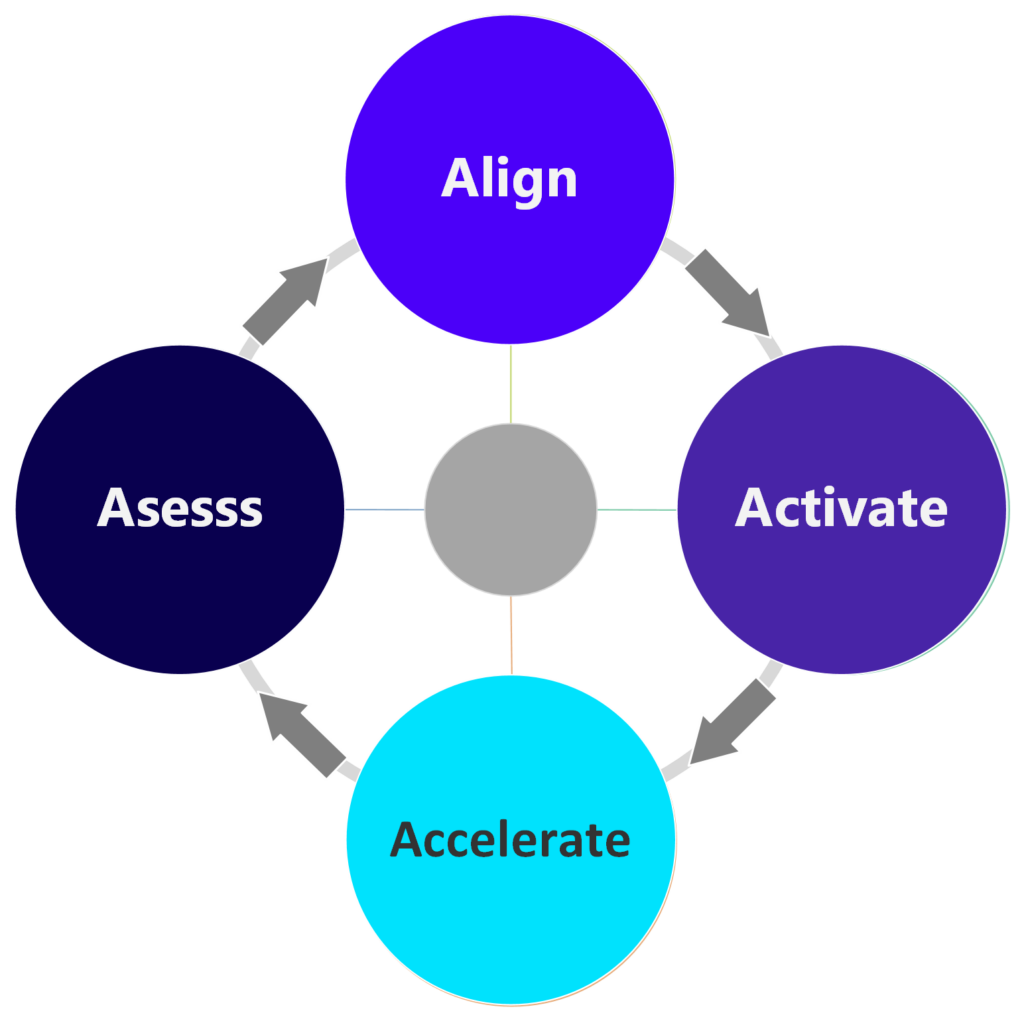Cultural Alignment Yields High Performing Organizations
We are very happy to partner with Culture Partners. For 34 years, Culture Partners has been co-creating programs with its clients to improve culture in the form of more accountability, sustained behavior changes, and most importantly — long-term financial results. Culture Partners senior partners have close to three centuries of experience in shaping cultures for companies both massive and mid-sized.
Culture acts as the amplifier for purpose and strategy—powering an organization’s ability to achieve critical business results. Working with Culture Partners, their clients define their desired culture, tie it to long-term business goals, and scale sustained behavioral change and accountability throughout the organization. They do this by using the Culture Equation, below, a framework that helps the client organization understand where and how culture fits into the bigger picture:
The Culture Equation in Action:
- Align: Define and align around the client’s unique culture equation–the purpose, strategy, and cultural beliefs needed to drive results.
- Activate: Develop a culture plan and enable internal champions to embed the client’s culture equation into people’s daily behaviors.
- Accelerate: Build momentum with elevated accountability across the entire organization. Integrate culture management into everyday systems and operations.
- Assess: With Culture Partners evaluating and analyzing the client’s progress, the client knows exactly where they are, where to go next and exactly how to get there.

Last year Culture Partners teamed with Stanford University to perform a study of 243 companies to examine the “relationship between purpose, strategy and culture” within those companies and determine how this relationship effects their financial performance. The study found that, “full alignment across purpose, strategy and culture was the single greatest indicator of revenue growth.” And that, “alignment between culture and any of those individual areas (strategy and purpose) also had clear impacts on revenue growth. Comparatively, organizations with misalignment between any of these areas experienced significantly less revenue growth than their aligned peers (over a three-year period). Additionally, only adaptability proved to be a statistically significant cultural dimension affecting revenue growth. Adaptive cultures grew revenue by nearly 50% while non-adaptive cultures only grew revenues by 17%. In other words, companies with an adaptive culture—those that adjusted to align purposes, strategy, and culture as needed— experienced 192% greater revenue growth than those unable to adapt to changes.” The paper goes on to say that the key to this alignment is to “operationalize culture through the right experiences.” Simply massaging the company’s strategy will not change the results fundamentally; the study confirmed that to effect the desired change, they needed an experiential element order for the strategy make sense in the lived experience of the team members.
The paper references the experience of a client, in this case a hospital, as they tried to do a more effective job of capturing next-of-kin information of emergency room patients. The hospital administrator saw that the staff only collected this information from 42% of arriving patients and concluded that a change in strategy was required. So they made the form and the intake process more efficient, thinking that the time saving should increase results. The new form and process were rolled out and it had a negligible effect, raising the percentage to only 47% from 42%. The administrator then decided that it wasn’t a change in strategy alone that was required but a change to the culture. The administrator told the staff of a young woman who had arrived at the ER conscious, but soon lost consciousness before they had collected any next-of-kin information from her. They administered a medication to her to which, unfortunately, she was very allergic. She reacted very badly to the medication. They tried other medications but it was too late and the patient died. If the staff had done their best to collect next-of-kin information, this person would very likely have lived. Once the staff was able to understand the importance of the intake procedure given this new context, the culture shifted and the staff accepted the new strategy, increasing the collection of this information from 47% to 92%.
The study really is fascinating and is full of insight as to what makes an organization tick and perform at a higher level. A link to the report can be found here.
We are very pleased to partner with Culture Partners and we invite you to have a look at them. They can help your organization’s culture serve not only the bottom line, but also those who work with you- that’s where the change will come from.
